We are all familiar with small red dots, very similar to moles, that can appear anywhere on our body out of the blue. Often, we simply do not pay special attention to them, however, these spots indicate certain changes occurring in our body. Although knowledgeable people advise that you should not worry about the appearance of red current on the body, for some reason it appeared! Therefore, at least for your own peace of mind, it would not hurt to contact a specialist if the appearance of a red dot worries you. Extra examination will not be a hindrance.
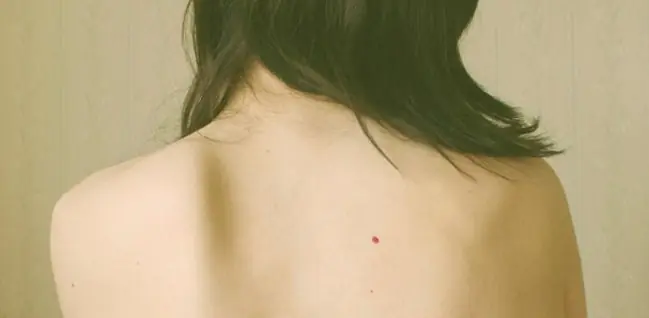
Red dots on the body - what are they?
Red dots on the body, like moles, what are they? These are benign formations, pink or scarlet, that appear on any part of our body at any age, even in young children. Most often it is believed that the reasons why red specks appear, called capillary angiomas, are senile changes in the skin. In most cases, this is true, however, these points can also indicate that some kind of malfunction has occurred in our body. Often, such points indicate hidden diseases of the internal organs.
If you think carefully, what age-related changes can a child or a very young person have who have red moles? Here there is a clear answer - it is necessary to examine such a person for the presence of diseases of the internal organs. It is better to prevent an impending problem than to deal with it later.
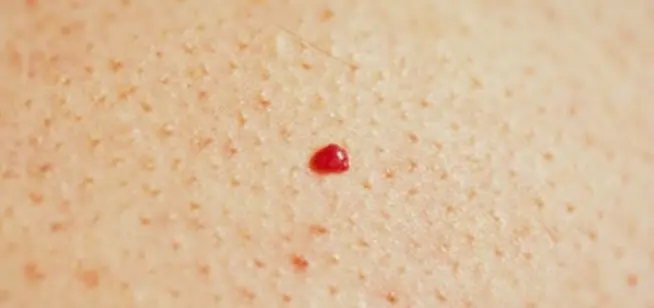
If suddenly one or more red dots appear on the skin of the chest, back or abdomen, quickly disappearing or, on the contrary, increasing in size, then you should pay attention to the pancreas and other organs of the gastrointestinal tract, which may be in danger. Also, there is a possibility that the cardiovascular system is sick, or the hormonal balance is disturbed. It is necessary to undergo an appropriate examination, which will reveal what is wrong with our body.
In a small child, the appearance of red moles indicates the presence of benign vascular formations of the skin, the cause of which lies in the mother’s illness in the first months of pregnancy with viral respiratory ailments.
The dots can either appear suddenly or disappear, however, if their number increases sharply, this should not be ignored, you should quickly run to the doctor.
Types of red dots - angiomas
Typically, red dots on the body do not cause pain and do not exceed a diameter of 2 millimeters. They don't grow any further. Cases when they begin to hurt, itch, or cause discomfort in general well-being are very rare. Moles can appear anywhere on the body. If, when such spots appear, unpleasant, painful sensations appear, or the temperature rises, you should immediately run to the clinic.
Red dots differ from each other in the reasons for their appearance and shape; they usually consist of small capillaries and are pink or red in color. According to their form they are divided into:
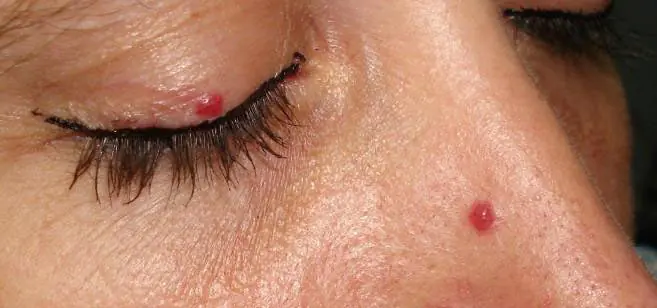
They can also be divided according to their structure and the results of histological examination. If an ordinary angioma grows, then a large mole appears, which is called a hemangioma.
Causes of appearance on the skin
The reasons for the appearance of angiomas on the body are not fully understood, however, heredity is considered the main reason. There is a possibility that their appearance is also facilitated by hormonal and age-related changes in the skin, in the presence of certain diseases of the internal organs, mainly digestion, skin trauma, pigmentation disorders or vascular malfunction. With prolonged exposure to the sun, the appearance of small red dots has also been noticed, which go away on their own. In any case, if you have such a problem, for your own peace of mind, it is best to consult a specialist.
How to remove red dots on the human body
Red dots often disappear on their own, without any intervention. If angiomas do not cause concern, do not grow and are located on closed parts of the body, then it is not recommended to touch them. You can remove such a point if it is on an exposed part of the body, such as the neck or face. The sign when an angioma begins to enlarge is also an indication for its removal.
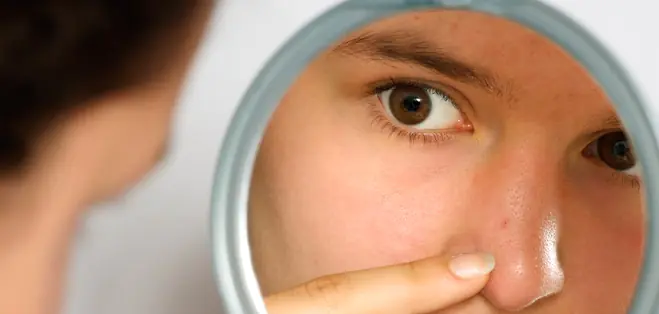
Removal by medical methods
There are several medical methods for removing red moles:
- Surgical removal, in which the doctor cuts out the angioma and then stitches it together. This method has been considered the most common since time immemorial, however, it is a painful procedure, and after removal a scar remains;
- removal by electric current - electrocoagulation is also a painful method and leaves traces;
- The laser treatment method is the most effective and does not leave scars, but it can only be used to remove flat angiomas; the laser may not treat very convex angiomas, since it only affects the upper layers of the skin. After the procedure, there is a possibility that the red dot will reappear;
- X-ray therapy, and vascular sclerosis.
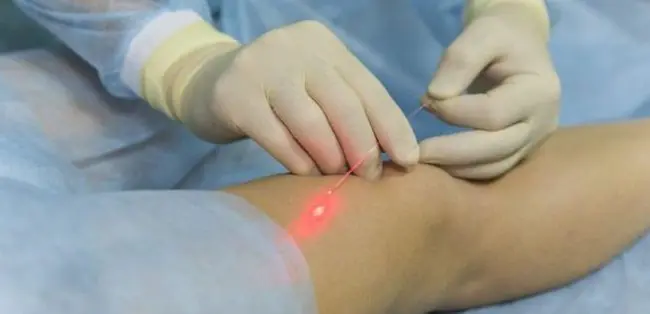
The intervention option is chosen by the attending physician in accordance with the diagnosis, the cause of occurrence and the studies conducted at the medical institution.
Treatment at home using traditional methods
To avoid surgical intervention, you can use traditional medicine methods to remove formations, which are often even more effective than the above methods. However, it is easier to prevent the appearance of angiomas than to treat them later. And to do this, you should stay in the sun as little as possible, and not get carried away with the solarium. If you have red hair and fair skin, you are most susceptible to the appearance of pink spots.
Cauterization of moles will not lead to proper results, since in most cases they are located in the inner layers of the skin, and on top there is only a small part, which may disappear when cauterized, but later, the angioma will appear again.
The most common medications for treating red spots grow on the windowsill. This is aloe and euphorbia.
An aloe leaf or its juice is applied directly to the affected area three times a day until the bulge disappears. You can make a bandage with aloe juice and wear it constantly until the mole disappears.
Euphorbia is used in the same way as aloe - either juice or crushed pulp from the leaves of the plant is applied.

One popular treatment for red moles is apple cider vinegar. Before using it, do a test - apply a little liquid to the skin; if there is no reaction, you can lubricate the affected areas by applying cotton swabs soaked in vinegar to them. If you use such lotions twice a day, the skin problem will disappear within a week.
Garlic will also help you in treating this scourge. To do this, you need to mash two cloves to a paste, lightly add salt, and apply this mixture to the red dot for five days until it falls off.
Honey is a good way to soften moles. If you smear the bulge with honey for a week, it will become soft and soon fall off.
Use a paste made from soda to remove angiomas. It is prepared like this: mix one tablespoon of powder with four tablespoons of water, and apply the finished mixture to the sore surface. Leave it on for about an hour, then wash it off. The procedure is carried out twice a day.
You can use iodine purchased at a pharmacy. Use the drug diluted with water (1:5), which is applied to the mole with a cotton swab and left for 5 minutes.
A mixture of aspirin and water will help greatly. It will dry out the mole and it will fall off. It is prepared like this: three tablets of acetylsalicylic acid are crushed and mixed with two teaspoons of water. If you use this remedy for a couple of weeks, the angioma will dry out and disappear.
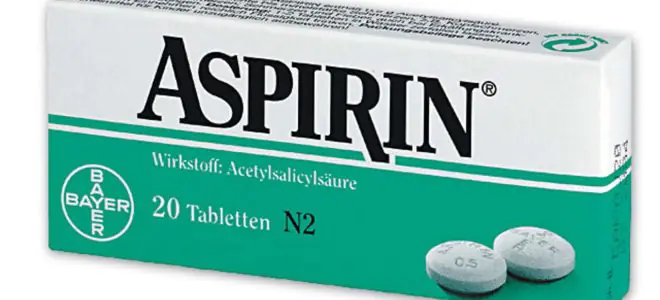
A good remedy for treating angiomas is dandelion root, the juice of which is applied to the sore spot three times a day for a week.
You can whiten a mole with lemon, grapefruit or pomegranate juice. The fresh juice of these fruits is applied with a cotton swab directly to the area where the sore is located, which will discolor over time.
How to make sure it's not cancer
Angiomas, in most cases, do not pose any danger in themselves, however, in order to exclude the occurrence of skin cancer, you should still monitor the emerging mole. If the tumor begins to change color, size and shape, then you need to consult a doctor to make an accurate diagnosis. This will help prevent serious illness and begin treatment in a timely manner.
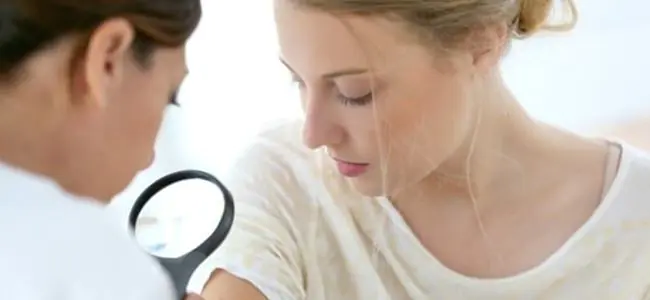
If a mole is asymmetrical and has uneven edges, is it worth paying attention to this? Malignant formations, for the most part, have jagged, uneven borders.
A darker color may also indicate that it may be a malignant tumor, in which case you should also consult a doctor.
Another criterion is increasing the size. Simple angiomas do not have large diameters and do not tend to grow on their own. If a mole begins to grow rapidly, you should also immediately run to the doctor.
What to do if the red dot itches
It often happens that angiomas begin to change both in size and shape. Then, they will itch, itch and hurt. Of course, in such cases, you must immediately contact a skin specialist or oncologist to make a correct diagnosis.
You can scratch the angioma, but you need to do it very carefully - you don’t need to use improvised means for this, especially if you don’t do it with your hands. You can use the same vinegar, which is used to moisten a piece of sterile bandage and wipe the disturbing area, or use alcohol if the red dot is damaged. If it’s not there, then green stuff will do.

Remember, for any changes in the angioma, and if itching or pain occurs, consult a doctor immediately!
Moles in medical terminology they are called nevi.
They can be found on the body of any person in the form of small round dots, small spherical formations that rise above the surface of the body, and large pigmented areas of the skin.
What it is?
Moles consist of specialized cells of the epidermis - melanocytes, responsible for the production of melanin in the body (a pigment that colors the skin in various shades of brown). Under the influence of external or internal factors, an excess amount of them accumulates in certain places of the skin - this is why moles appear on the body of an adult, child or elderly person.

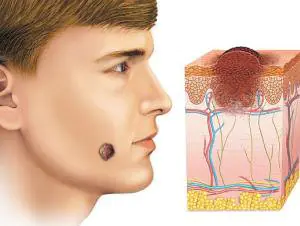
In some people, nevi remain unchanged on the skin all their lives, in others they disappear, in others they grow or change their shape and color. The latter become dangerous and can degenerate into malignant formations.
- Common moles have a rounded symmetrical shape, depending on the concentration of melanin in them, nevi are colored beige, brown or black.
- Meet and red dots on the body as moles, for the most part this phenomenon is associated with impaired skin pigmentation due to hepatic or endocrine pathology, as well as natural age-related changes (i.e. as a result of aging).
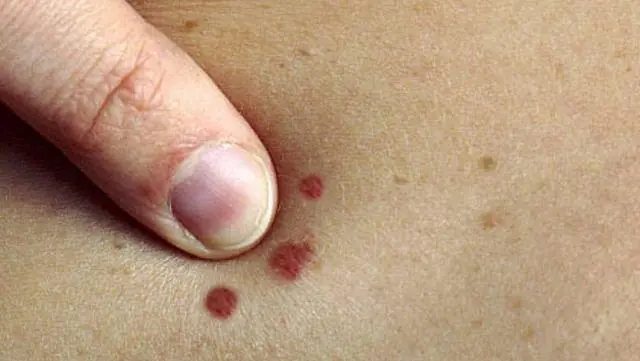
The difference between these spots and moles is that they usually appear in groups on a limited area of the skin. When metabolic processes are restored, the red spots disappear.
In adults, the appearance of nevi is associated with hormonal crises due to illness, menopause or nervous exhaustion. The appearance of moles in them can be observed constantly or appear spontaneously, in response to a certain stimulus. In childhood, science has noted the wavy growth of nevi.
Periods when moles appear in children:
- 6 months - six months, at this moment the child’s endocrine system adapts to external conditions;
- 5-7 years, the stage of active growth of the skeletal system and skeletal muscles, requiring rapid metabolic reactions;
- 12-16 years, puberty with significant changes in the functions of the whole organism.
Why do they appear?
Nevi are essentially benign skin formations.
Some people get scared when they see many moles on their body. What does this mean for a specialist? Only that the patient’s body is prone to accumulation (accumulation) of melanin in the surface layers of the epidermis.

The reasons for the appearance of numerous or single nevi are varied.:
- exposure to ultraviolet radiation, one of the most common factors in the formation of moles due to increased melanin levels during tanning;
- traumatic damage to the epidermis, systematic violations of the integrity of the skin contribute to the appearance of pathological changes in it;
- exposure to radiation, which rapidly changes normal skin cells;
- consumption of harmful products (GMOs, fast food, alcohol) and smoking, these habits negatively affect metabolic processes in the body.
- endocrine disorders and diseases, any changes in hormonal levels can cause the appearance of skin pathologies, pigmentation, moles;
- hereditary predisposition, the presence of various nevi in the family.
Classification and photo
1. A flat nevus or birthmark is a pigmented island of skin with clearly defined boundaries. It can take the form of lentigo - multiple brown or brownish formations in the upper layers of the epidermis.
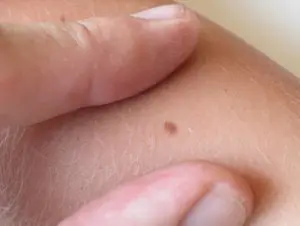
2. Convex nevus or mole. It has a diameter of up to a centimeter, a smooth or lumpy surface and rises above the level of the skin. Its color varies from beige to black, and a hair is usually located in the center of such a formation.
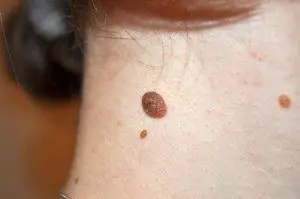
3. Blue nevus or blue mole. It looks like a smooth hemisphere, slightly raised above the skin, sometimes reaching a size of 2 cm. The color of this benign formation ranges from blue to dark blue.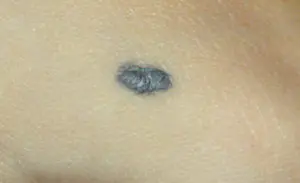
4. Giant nevus. It is a large spot on the body, gray, bright beige (sometimes brick), black or brown.
Dangerous and non-dangerous moles
Ordinary nevi do not cause any discomfort to their carriers; sometimes they even disappear without a trace. Their shape is stable, size and color remain unchanged.
But benign moles are sometimes removed to prevent their degeneration if they are of rather large size (pedunculated) and are located in areas of the body where a person constantly injures them (during vigorous activity or parts of clothing).

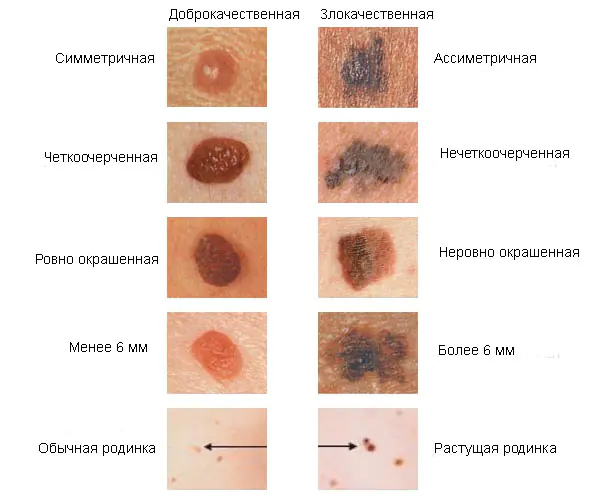
Remember dangerous moles in the photo and be vigilant!
If nevi degenerate into cancerous moles, this is dangerous, since such neoplasms quickly metastasize to other organs.
Therefore, it is very important to see signs of malignancy in time.:
1. The shape of the mole changes, it loses its symmetry and begins to grow in one direction.
2. The edges of the nevus become uneven (“cut up”, “torn”).
3. The color of the mole is uneven and contains yellow, red or black inclusions.
4. The nevus grows or “shrinks”, its size changes quickly.
5. The texture of the mole becomes different, smooth becomes rough, bumpy becomes flat, etc.
6. Loss of hair growing from the nevus.
7. Itching, peeling and burning in the mole area.
There are several reasons why a nevus itches:
– pathological cells multiply;
– there are active processes of death of healthy tissues;
– the area around the formation becomes inflamed and swollen.
8. The appearance of microcracks and ulcerations.
9. Bleeding and soreness of the mole.
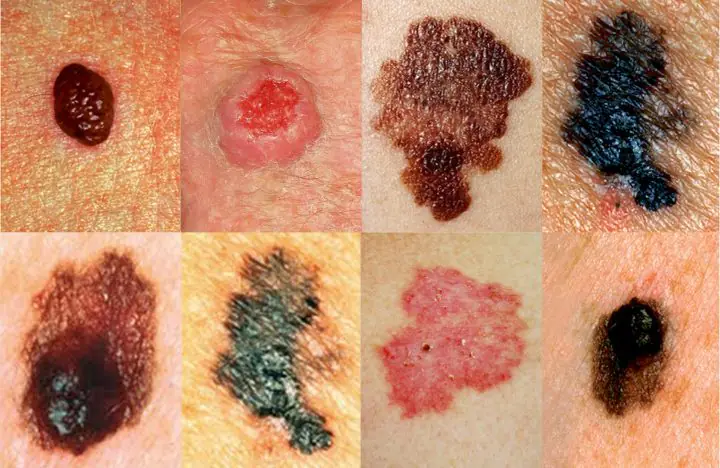
Cancerous moles (melanomas): photo
What happens if you rip off a mole?
You cannot remove a nevus yourself.
Firstly, it is dangerous, and secondly, it is simply ineffective. If the mole is located close to blood vessels, prolonged bleeding may develop. Often such self-medication leads to re-formation of the nevus, its growth or malignancy.
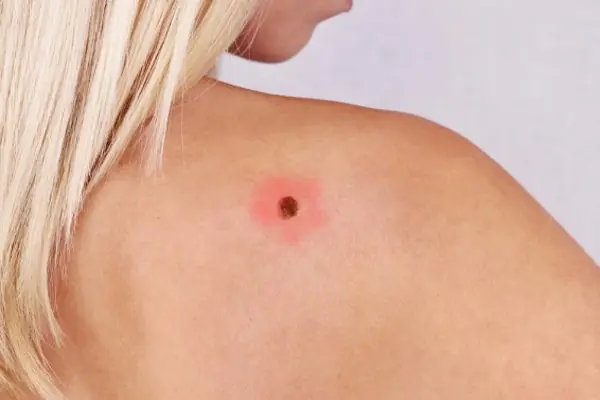
Therefore, it is difficult to predict what will happen if a mole is torn off. It may have no consequences, or it may cause serious complications for the health and life of patients.
Doctors warn that any trauma to the nevus is extremely undesirable, but pedunculated moles or small convex formations can be accidentally removed with nails or hard items of clothing.
What to do if you rip off a mole:
- cauterize the wound with an alcohol solution;
- stop the bleeding by applying a gauze bandage;
- come to see a specialist.
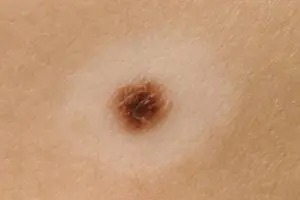
In cases of partial removal of a mole, do not touch the remaining formation, do not cut it off or tear it off.
Sometimes such pigmentation appears before the disappearance of a mole (as a sign of depigmentation), and in other cases it may signal its degeneration.
White spots around the mole appear as a characteristic sign of Setton's nevus. This formation is considered harmless in terms of degeneration into a more malignant form, however, melonomas (aggressive cancerous formations) can also have such a white rim, so the appearance of white spots is a reason to contact a medical specialist.
Diagnostics
Dermatologists and oncologists are involved in determining the type of nevus.
Using a dermatoscope, the doctor examines the formation and determines its nature (benign or malignant). Sometimes a histological examination (scraping method) is required.
Biopsy (tissue sampling) for nevi is not used due to their trauma during this procedure. And as you know, it’s better not to touch moles again!
Removal
Many people want to get rid of birthmarks and nevi not only in cases of malignancy (pathological change), but also to correct a cosmetic defect.
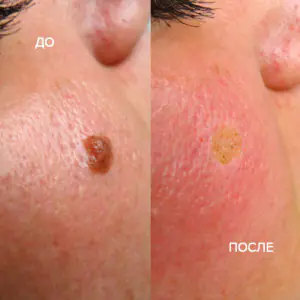
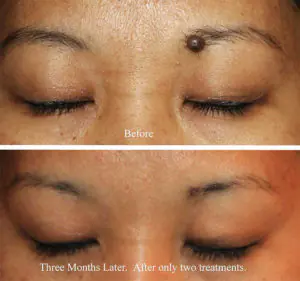
However, removal is carried out at the oncology center for people with malignant tumors and with a high probability of degeneration of nevi.
Often the indication for surgery is the localization of moles on the body: on the scalp, on the neck, on the chin, in the area of the shoulder blades.
Methods for removing nevi (with information on how much it costs to remove them):
- surgical, using local anesthesia and a scalpel (in municipal surgical hospitals, according to indications - free of charge, in medical centers from 300-500 rubles)
- cryofreezing with liquid nitrogen (1000-1500 rubles);
- electrocoagulation - cauterization with electric current (600-1300 rubles);
- photodynamic - ultraviolet irradiation (1000-1200 rubles);
- laser - removal of moles with a beam (800-2000 rubles);
- radio wave, destruction of nevi by shock radio wave (RUB 700-1400)
The choice of method for removing moles is made by the doctor; prices for these procedures depend on the size and type of nevus.
Prevention of malignancy
Preventive methods for reducing the risk of malignancy of moles include:
- limited sunbathing, cancellation of visits to the solarium;
- minimizing skin trauma;
- maintaining a healthy lifestyle (healthy eating and avoiding bad habits).
Brown spots, similar to moles or birthmarks, are spots that form on the skin and range in color from light brown to red or black. Their appearance can be caused by various reasons, but one of the most common causes is exposure to the sun. These spots are also known as dark spots, age spots, or hyperpigmentation. The spots can appear on the face, arms, shoulders, arms, forehead and even on the scalp of bald people.
What do mole-shaped spots look like on the body?
The top layers of human skin contain a pigment called melanin, which gives it its normal color. When a person is exposed to ultraviolet radiation, the formation of melanin in the skin is accelerated, and it protects the deeper layers of the skin from the adverse effects of the sun. If the skin is exposed to the sun for a long time, then melanin thickens in a certain area of the skin and as a result, a brown spot forms in this place.
Mole-shaped spots can take on different sizes, shapes and differ in the structure of the surface layer. The most common spots are pigmented nevi. They take a clear circle shape and have defined boundaries, without rising above the surface of the skin.
Why do mole-shaped spots appear on the body?
There are many conditions that can cause brown spots on the skin. The main causes of neoplasm can be:
- ultraviolet light in sunlight;
- trauma caused by skin diseases;
- medications that have side effects on the skin.
Also, in addition to this, there are some skin diseases that cause dark spots:
- Acne.
- Melasma.
- Melanosis.
- Poikiloderma Siwatt
- Erythromelanosis follicular
- Hyperpigmentation.
In addition to exposure to sunlight and disease, aging and genetic makeup play an important role in determining susceptibility to developing brown spots.
Brown spots in the form of moles on the body
Various brown spots can be due to a number of reasons:
- Diseases associated with the gallbladder, liver and adrenal glands. Kidney diseases.
- Pregnancy period. The appearance of such spots depends on the woman’s hormonal background. Due to its sudden change, a woman may notice spots on her face or body. Such spots do not require treatment and disappear after the baby is born.
- Sun and medications. All these factors can cause changes in the skin.
- Some infections in the body.
- Violation of the integrity of the skin.
- Skin fungus.
Red spots on the body in the form of moles
If red dots appear once, there is no need to sound the alarm. Perhaps it was a simple malfunction of the body.
When they appear with enviable consistency and bother a person, then it’s worth paying attention to. If you find red dots on your body, you should still see a doctor. Let him order a full examination.
The appearance of red dots may be associated with several factors:
- Diseases of the liver and pancreas.
- Vascular neoplasms.
- Avitaminosis.
- Rheumatism.
- Damage to the skin.
If the red spots do not change or grow, they usually do not require treatment. But if, for example, a red spot is located on the face and causes discomfort to a person, then you can think about removing it.
Removal is carried out using several methods:
- Laser therapy.
- Surgery.
- Cauterization or freezing.
- X-ray radiation.
- home
- Stains



